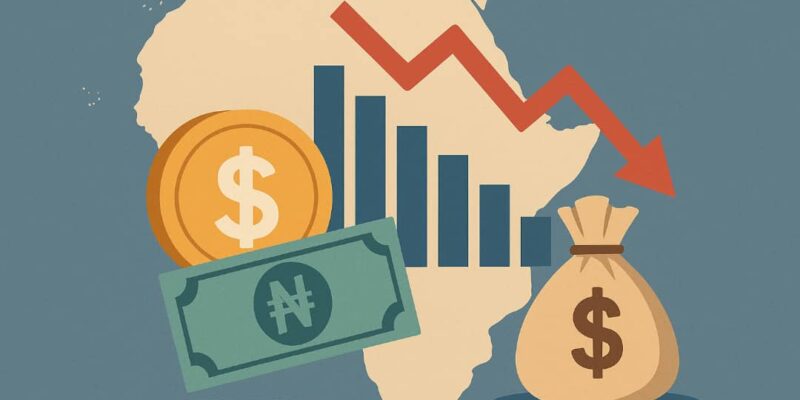Across Sub-Saharan Africa, everyday financial life is becoming more difficult. Inflation keeps rising, local currencies are losing value, and getting access to U.S. dollars is harder than ever. In response, people and businesses are turning to stablecoins, digital currencies tied to the U.S. dollar not for hype, but because they work when traditional systems fall short. Unlike more volatile cryptocurrencies, stablecoins like USDT and USDC are proving useful for preserving value, sending money across borders, and earning internationally. In places like Nigeria, Ghana, and Kenya, they are becoming essential tools.
A Dollar Crisis and Rising Inflation
Inflation in parts of Sub-Saharan Africa is making basic life unaffordable. Nigeria saw inflation pass 33% in early 2025. Ethiopia continues to face double-digit increases. Local currencies like the naira, cedi, and kwacha have lost much of their value. Even where inflation slows, access to dollars is limited. People need dollars for imports, school fees, and business transactions. But banks often fall short, and the black market is expensive and risky. Stablecoins give people a way to store money in dollars without needing a foreign account or dealing with poor exchange rates. They are accessible through mobile apps, fast to use, and avoid the red tape of traditional finance.
Helping People Save and Send Money
Stablecoins help protect against inflation. In countries where opening a dollar account is hard, people use digital dollars to keep their savings safe. It’s a way to avoid watching their income lose value week by week. Remittances are another key use. Traditional services charge high fees and can be slow. With stablecoins, people abroad send money home faster and cheaper. For example, Ghanaians and Nigerians living overseas now use apps that send stablecoins directly to family back home. Freelancers and remote workers across Africa are also getting paid in stablecoins. Platforms like Binance Pay or Bitnob let them avoid high banking fees and long wait times. It’s a smoother way to get paid for work done online.
The Numbers Say It All
Between July 2023 and June 2024, stablecoins made up 43% of all crypto activity in Sub-Saharan Africa, more than anywhere else in the world. Nigeria leads in usage, with platforms like Binance P2P and Yellow Card reporting strong growth. Yellow Card alone saw a 260% increase in stablecoin use by late 2023. Fintech startups in Kenya, Uganda, and Ghana are also integrating stablecoins into mobile money apps. The goal is to let people switch easily between local currency and stablecoins, all within apps they already know.
Why This Matters
Stablecoins are filling real gaps. For people without access to traditional banks, they offer an easier entry point to the financial system. Transactions are faster, cheaper, and often more reliable than bank wires or remittance services. They help protect savings from inflation, support small business payments, and unlock cross-border trade.
Challenges Remain
Still, the path isn’t smooth. Governments are unsure how to regulate digital currencies, which creates uncertainty. Scams are a real threat. And in rural areas, weak internet and power cuts make access harder. There’s also the problem of converting stablecoins to local currency. Without strong on- and off-ramps, people may have to rely on informal markets to cash out.
Looking Ahead
Experts agree that stablecoins are being used for practical needs, not speculation. They are helping people adapt to economic hardship and build new financial habits. If current trends continue, stablecoins won’t just be a backup plan, they’ll become a central part of how people across Africa manage money.
In many ways, Africa isn’t just catching up with the future of finance, it’s helping shape it.

Comments